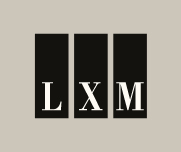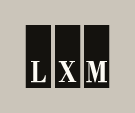Individuals accepting to serve as corporate directors or officers (“D&O”) today assume personal liability risks both at common law and under hundreds of Canadian statutes. This is why most individuals expect directors and officers liability insurance is already in place when they accept to serve as a director or officer. Contrary to what many people may think, D&O policies are not standard insurance products. Policy terms can vary widely from policy to policy such that D&Os who don’t take the time to understand and/or negotiate an appropriate scope of coverage could potentially find themselves without protection when they need it most.
This article provides high-level guidance on best practices a Board should adopt when purchasing D&O liability insurance and what to look for when analyzing a policy.
The need for directors and officers liability insurance: Common risk scenarios
The following are common risk scenarios which lead to allegations or claims against D&Os:
- Failure to comply with regulations or laws, leading to fines and penalties
- Employment practices (discrimination, sexual harassment, or wrongful termination against the corporation)
- Decisions exceeding the authority granted to directors or an officer (derivative actions, i.e. granting improper compensation to D&Os)
- Securities law-related: misrepresentation in a prospectus, inaccurate disclosure, shareholder actions
Common layers of indemnity protection
Recognizing the need to protect D&Os from personal liability in the performance of their roles, most Canadian public and private sector corporate statutes permit corporations to indemnify directors and officers and to purchase D&O insurance.
This indemnity protection is often confirmed by the articles of incorporation or corporate bylaws and may be reinforced by personal indemnity agreements between each D&O and the corporation. However, these corporate indemnities are only effective to the extent they are legally enforceable and the corporation has sufficient funds to cover the liabilities.
Where the corporation is not permitted to indemnify or is not sufficiently solvent to pay for the liability costs, D&Os will typically look to a D&O insurance policy for coverage.
Where both the corporation and policy do not respond to the particular claim or allegation (such as where the loss is excluded from a policy), then D&Os face the ultimate disaster scenario where they will have to personally defend an action and pay for costs, judgements or settlements.
Given the importance of the D&O insurance policy to the corporation (to satisfy corporate indemnity obligations, for example) and to the D&Os personally, it’s important for Boards to make certain the corporation carries appropriate D&O insurance that is as comprehensive as possible.
Board’s role in the purchase of directors and officers liability insurance
I recently asked an industry expert, “What’s the biggest mistake Boards make when purchasing D&O insurance?” He said, “They let the CFO make decisions on the purchase of D&O insurance. That’s a problem because the CFO will often focus on finding the lowest cost policy.”
The cost of the policy is just one factor to consider in the purchase of directors and officers liability insurance. As part of their general duty of care to the corporation, directors are expected to understand the risks of the corporation and how the organization’s insurance policies, including D&O policies, respond to those risks. Simply having a CFO purchase a policy without Board engagement falls short of the requisite standard of care.
The Board should be directly involved in the D&O policy procurement process and should allow sufficient time to address key decisions in the process, which should include the following:
1. Selecting the right broker
D&O policies are not commercial off-the-shelf products in that no two policies are the same. To understand the policy terms available to the Board, and to secure the right policy or policies, a Board should work with a knowledgeable and competent broker who is able to answer all of the Board’s questions and whose advice they can rely on. The broker should also guide the Board through its decision-making process.
2. Ensuring the broker has access to reputable carriers
Boards should also make sure the broker they work with has access to a large number of carriers so they can canvas a broad market and offer the best policy available given the corporation’s sector, industry and risk profile. The broker should be able to provide assurances regarding the reputability, experience, and financial capacity of the carrier they propose to work with in securing appropriate D&O insurance coverage.
3. Analyzing the policy and asking the right questions
Directors should be able to demonstrate they were diligent ensuring the D&O policy terms were considered and that they also considered an appropriate policy limit in light of those terms. Policies should be analyzed at a minimum by referencing the key terms highlighted below in the section entitled “Analyzing a D&O Policy”.
4. Reviewing coverage every year
Industry standards for D&O policies are ever-evolving. To benefit from these changes, Boards should, working with their broker, review the adequacy of their insurance policies annually, ideally following their annual update to the corporate risk profile.
Analyzing a D&O Policy
The following are the key terms one expects to find in a directors and officers liability insurance policy with some high-level commentary. For each area, Boards should take the time to discuss the concepts and the policy options available to them with their broker.
- Type of Coverage. Boards should ask about the types of coverage being recommended by the broker which may be as follows:
Side A Coverage provides personal D&O coverage for non-indemnified claims. It has been described as “catastrophe protection” for individual D&Os. It provides a way to ensure that litigation protection is available even if the company can’t provide the indemnity protection.
Side B Coverage provides the corporation (the entity) with reimbursement for indemnified claims paid out to D&Os. This is sometimes referred to as balance sheet protection.
Side C Coverage provides coverage for corporate liability when the entity is a defendant in covered claims. This is also referred to as balance sheet protection.
There are more complex types of coverage available that offer protection beyond the Side A, B and C coverage that are beyond the scope of this article.
- The Insuring Clause. All policies more or less offer a general protection for claims made during the policy period alleging wrongful acts against insured persons.
- Insured Persons. Boards should ensure the definition of Insured Persons is adequate. The individual and the entity may be named as insured persons and you will want to ensure past directors are protected. If there are subsidiaries, they may also need to be covered.
- Definition of Loss, Claim, Wrongful Act. Consider the definitions of Loss, Claim, and Wrongful Act.
- The term “Loss” covers liabilities and expenses the policy will pay for including legal fees and defence costs and will list liabilities and expenses the policy won’t pay for which may include regulatory fines, penalties, and matters that are not legally insurable.
- The term “Claim” should go beyond what is typically understood to be a claim in a civil litigation context and include informal allegations and regulatory investigations.
- The term “Wrongful Act” defines the type of alleged or actual act that triggers coverage.
- Exclusions. The exclusions from coverage depend on the terms of each policy but the following are some standard exclusions:
- Fraudulent, criminal, or intentionally non-compliant acts
- Acting for personal profit
- Personal and bodily injury, property damage (e.g.. defamation, mental anguish)
- Claims covered by other insurance
- Environmental damage or pollution
- Pension law violations and violations of fiduciary duties to plan members (this may or may not be excluded)
In the event a claim falls within an exclusion, a D&O policy will not respond. Where an excluded claim is co-mingled with covered claims in an allegation, the policy may cover the full or partial costs of defence depending on the wording of the policy or there may only be a proportion of the settlement or judgement costs covered.
- Applicability of Deductible. What is the deductible amount? The Side B and C deductible normally apply to defence costs as well as judgements and settlements but in some cases, this can be amended so that the deductible does not apply to defence costs.
- Costs in Excess. Are the defence costs included in the policy limit or in addition to the policy limit? Defence costs can be significant and can erode coverage, and possibly exhaust the policy limit.
- Notice of Claim/Reporting Period. Failure to report a claim within this period may result in denial of coverage so you will want this period to be as long as possible. Some policies don’t specify a period and may stipulate that the claim must be reported as soon as practicable after becoming aware of the claim.
- Discovery. This refers to an extended period for reporting a claim that can be anywhere from 1-6 years following expiration/non-renewal of the policy. This allows for a longer reporting process beyond the period of the policy coverage and is a useful option to have if a policy is cancelled or not renewed.
- Duty to Defend. Does the insurer have a duty to defend or does the policy only provide reimbursement for defence costs? A duty to defend offers the insured a greater degree of support in the management of a legal claim, including selection and management of counsel and direct payment of counsel fees.
- Allocation. This addresses situations where a claim alleges a number of wrongful acts that may be covered by the policy and others not. In this case, the policy may stipulate that the insurer will cover 100% of defence costs or it may cover a portion of defence costs.
- Continuity. When an insured moves to a new insurer, the new insurer should step into the shoes of the previous insurer immediately and not request that the insured complete a “prior knowledge declaration”. There is no need for a discovery period as the insurance coverage is continued.
Conclusion
D&Os owe a duty to the corporation and to themselves personally to understand what D&O insurance coverage should be included in their policies given the risks associated with their role. This understanding will allow D&Os to have an informed discussion with their broker on additional coverages which may be required in their specific context and help avoid a ‘disaster scenario’ where D&O’s are personally required to defend and pay out claims.

